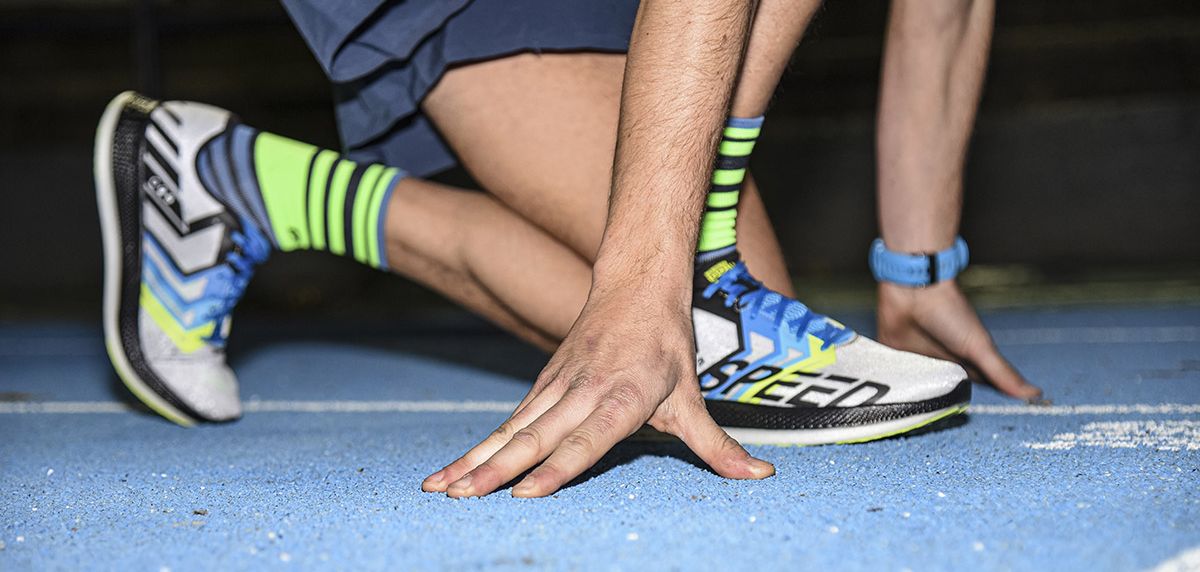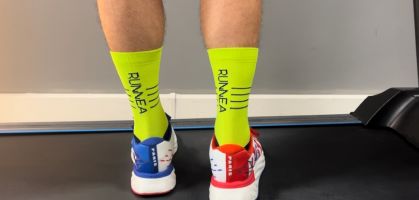What are aerobic and anaerobic thresholds, how can you work on your thresholds and improve your training and racing? In this article we will explain the importance of aerobic and anaerobic thresholds to optimize your running training.
In many occasions we hear the words threshold as something complex or only suitable for professionals but we do not know its real importance and its usefulness for our training and competitions even if we are popular athletes. When we talk about aerobic threshold, anaerobic threshold, etc. What are we referring to?

Understanding the terms aerobic and anaerobic thresholds
We are referring to a change in the utilization of energy sources that our body has. In other less technical terms, our body can use different fuels to generate energy and therefore movement (fats, carbohydrates and to a lesser extent proteins). Fats will be our main fuel at low intensities but when the running speed starts to increase, the carbohydrates we have in our body (in the form of glycogen) will start to be used more. When this change occurs between a predominance of the use of fats vs. carbohydrates, in favor of the latter, we speak of first threshold or aerobic threshold.
Many of you may be thinking, but don't they always talk about lactate? Yes, the utilization of carbohydrates will lead to lactate production. This should not be taken as something bad, it is a normal physiological process.
Let's continue with the thresholds, once we reach the first threshold (aerobic threshold) and if our running intensity continues to increase, there will come a time when the need for energy is so great that our body can no longer satisfy it through the use of carbohydrates and lipids by aerobic means.
I'm lost for a moment, what does aerobic route mean?

Basically when we breathe we take in oxygen and exhale CO2. That's why as the running intensity increases the breathing rate increases, as we need more oxygen to utilize the lipids and carbohydrates.
Despite this, there will come a time when the need for oxygen exceeds the supply. In other words, we need more oxygen than we are able to take in, so our body uses the anaerobic pathway to produce energy.

What does this mean? Well, if we want to keep running faster, the energy used by the body comes mostly from carbohydrates, but oxygen is not needed.
So I don't need to breathe? NOOOOOO, no way, we must remember that although we generate a lot of energy anaerobically, the aerobic pathway will remain active but with less predominant.
At this point, the predominance in the use of carbohydrates by anaerobic route, a phenomenon that we call second threshold or anaerobic threshold occurs.
Why is this fact so important? Its importance lies in the fact that it marks the intensity (in our case measured in speed) at which there is a balance between aerobic and anaerobic participation in energy production. After this point, if I decide to increase my running speed, anaerobic participation will be greater and my lactate concentration will increase exponentially.
What will happen if lactate concentration increases exponentially?
Lactate will not cause fatigue as is normally thought. If we continue to exercise at these intensities, other molecules that are associated with lactate production will cause a decrease in performance, but this is enough for a few more masterclasses.
How can we determine the aerobic and anaerobic threshold?

The best way to determine thresholds is with a gas analysis. We have ever seen on TV different athletes wearing a mask and running on the treadmill or bike. Another way is with lactate concentration analysis at different intensities. These ways are better to determine exactly when these moments occur.
On the other hand, there are different campo tests that can indirectly calculate these thresholds with a relatively low margin of error.
Why is it interesting to know the aerobic and anaerobic thresholds?
More than interesting to know them, I would say that they are necessary to train correctly. Based on the determination of these thresholds, what we trainers do is to determine the training zones so that our workouts are more effective.
You may be interested in: What does a stress test consist of?
Read more news about: Running Training





























